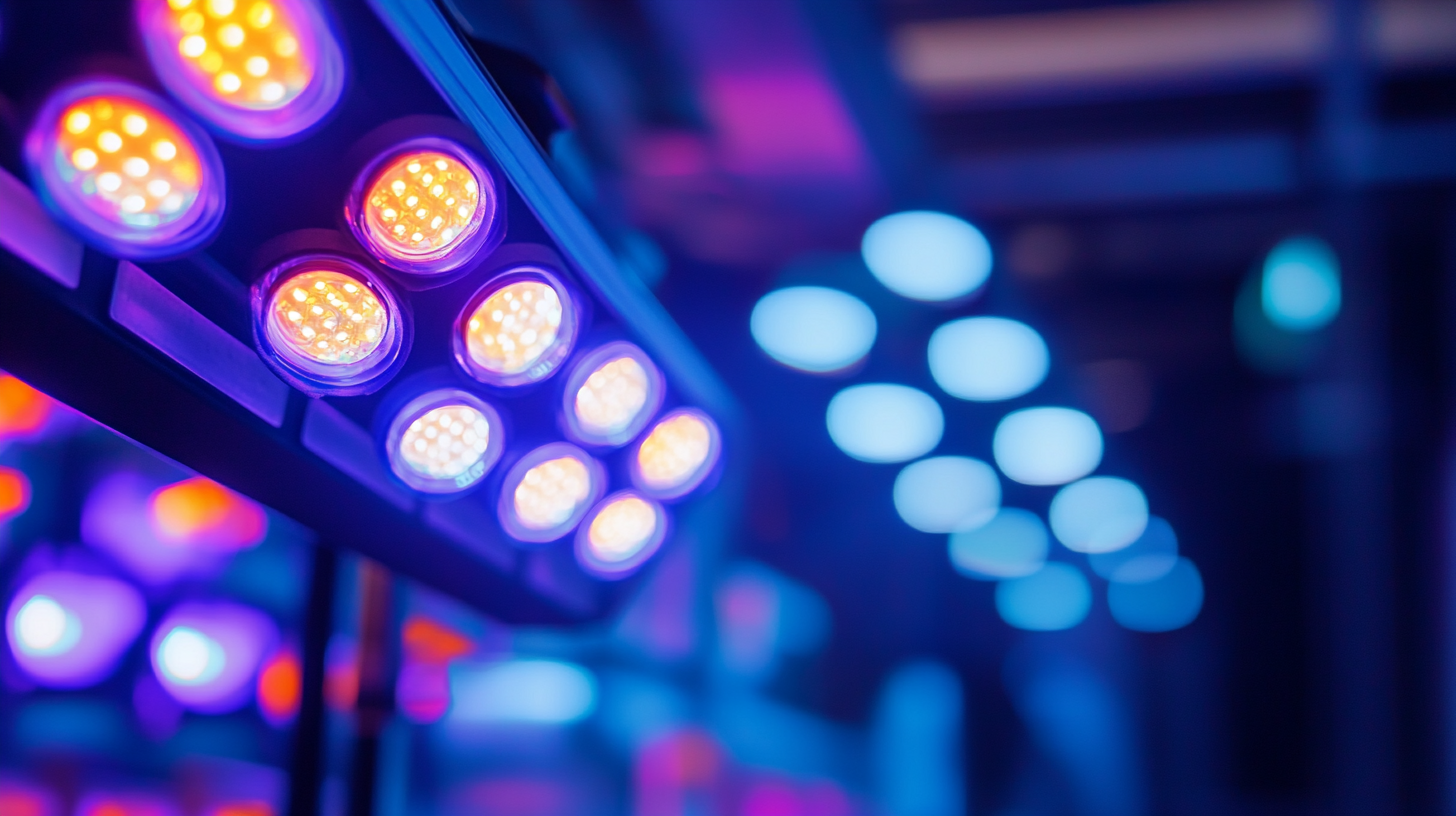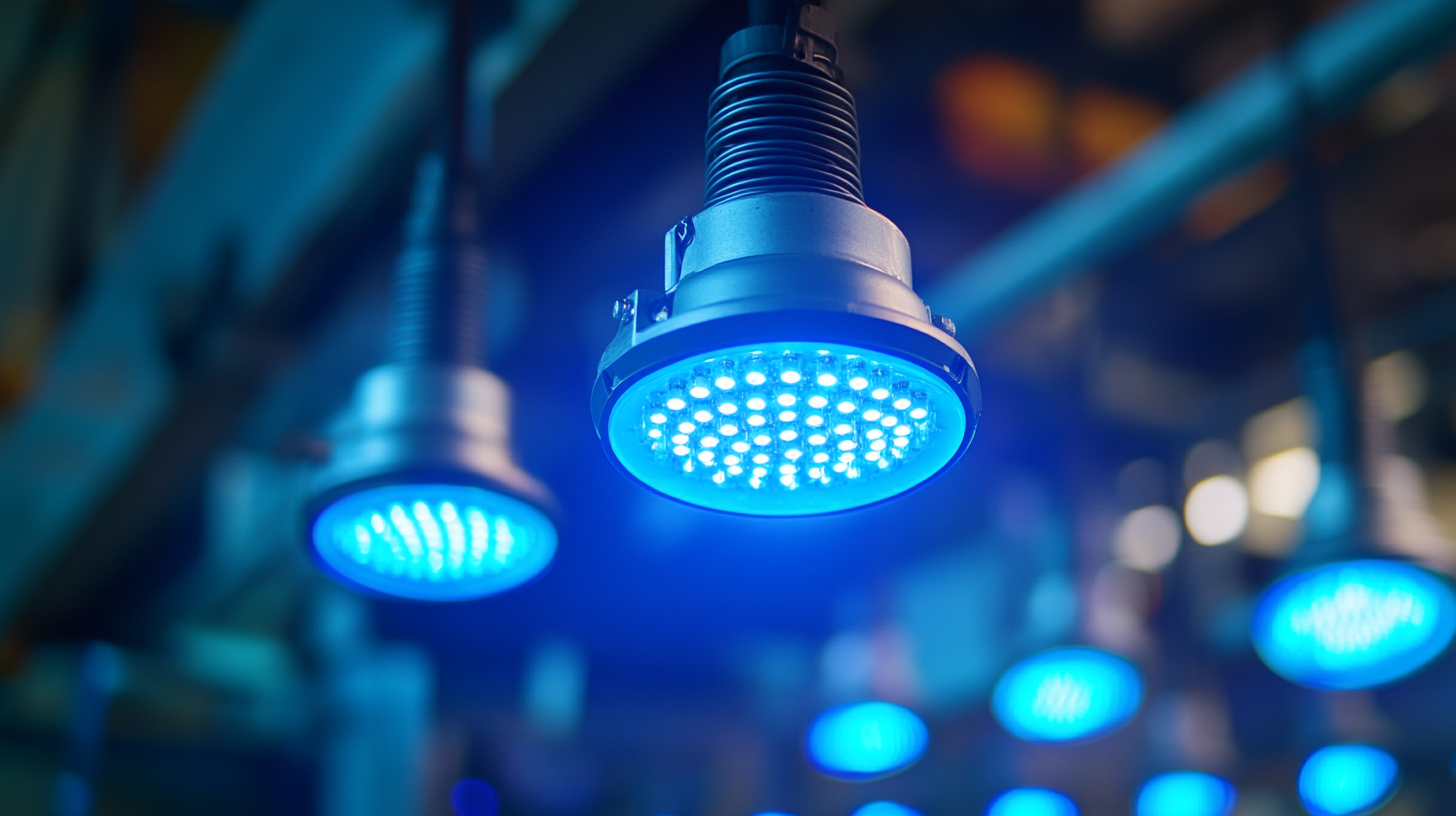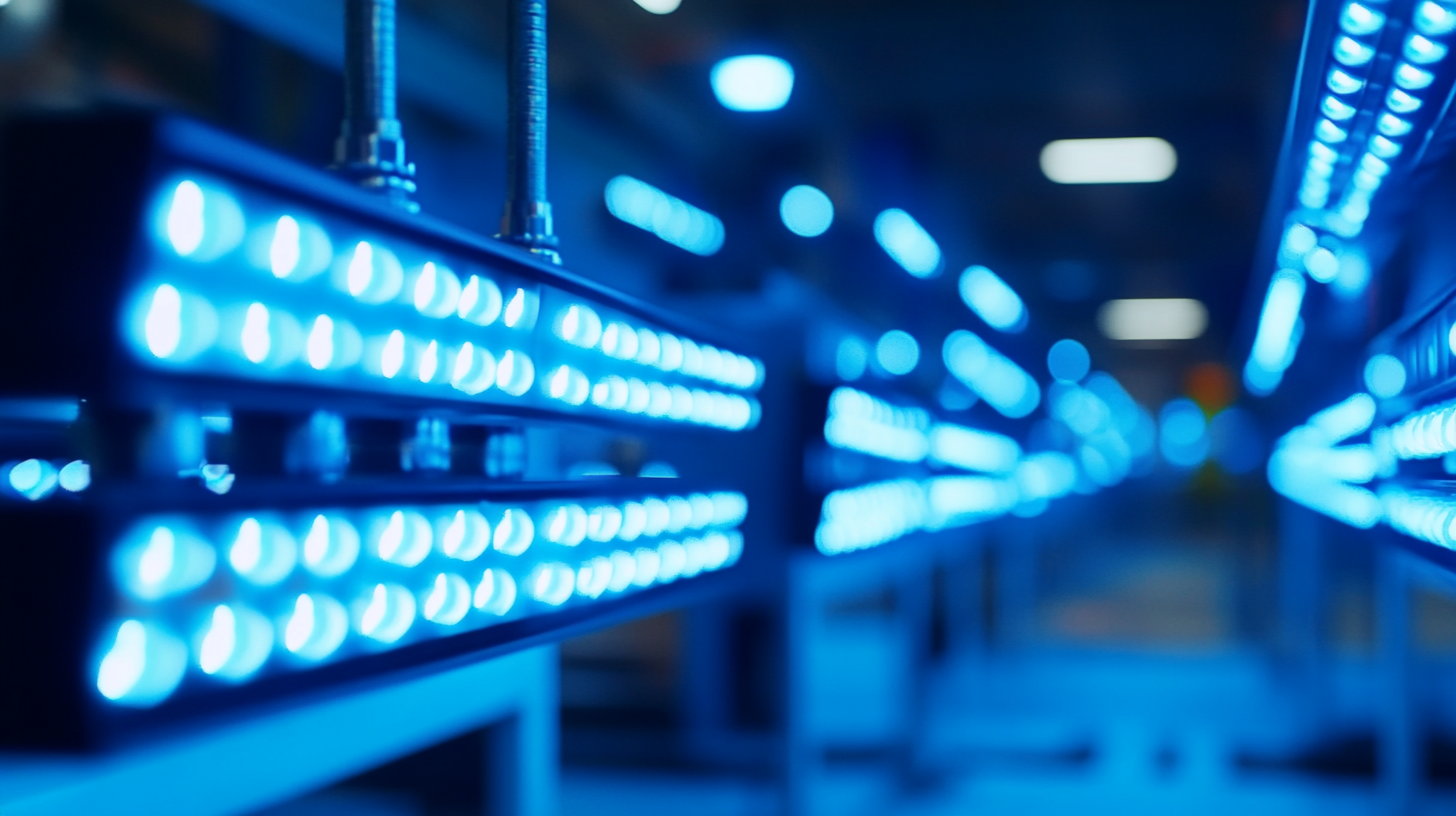The worldwide LED light market has touched an unprecedented growth pace within the last few years with the help of technology and subsequently the demand for energy-efficient lighting solutions. As per the report by MarketsandMarkets, the LED lighting market is expected to reach USD 132.43 billion by 2026, growing at a CAGR of 13.9% between 2021 and 2026. This rise is due to the acceptance of LED lights in sectors like residential, commercial, and industrial applications and the new focus toward sustainability and reducing carbon footprints.
The technological advancements of LED lights have ushered in major advancements with important specifications that buyers look up to in making their decisions. The lumen output, color temperature, and energy consumption of LED lights are primarily responsible for their intended quality and suitability to different settings. With a growing industry, additional knowledge regarding these specifications and recent trends in the market would benefit buyers all over the world. Through this unveiling of LED light technology, we hope to pass down some critical knowledge that promotes smarter investments and better lighting in many industries.

There have been significant advancements in LED light technology over the past few decades. There has been a paradigm shift from incandescent and fluorescent lights to LED lights. But if you want to know the real thing about the technology, you have to understand the base level at which it works. An electric current passing through the semiconductor diodes will emit light emitting diodes or LED lights. They are night and day from incandescent bulbs and convert more energy into light than into heat. For this reason, LEDs are consuming lesser energy, and so they are necessary for both customers and business owners because they economize energy costs. LED lighting has evolved with respect to performance and application; there used to be a time when LEDs were primarily considered an indicator light or display; today, however, they have developed into all types of lighting systems-from residential to sophisticated commercial installations. The specifications of a smart lighting technology expand the use scope beyond the controls and the integration of modern smart homes and buildings. Light-Emitting Diodes represent both technological advances and empathy with growing awareness of the need to embrace sustainability and energy conservation in a more holistic sense, making LED lighting the backbone of green practice in many industries. As the people globally are viewing the LED market for global purchases, they should understand the significant specifications including lumens, color temperature, and wattage to facilitate clear and concise decision-making in purchases made by the customers. These, in a few words, mostly determine the quality of light produced and hence how well users utilize the benefits of LED technology within spaces, thereby ensuring that they stay within reliable manufacturers and like-minded product partnerships towards their energy efficiency goals.

Indeed, it has become necessary to shed more light on the essential specifications of LED lights, assigning and assuming every application to its optimal performance and energy efficiency. The Lumen output, however, serves as the foremost specification, as it tells one how bright the light physically is. Since there are various types of brightness demanded from different applications, offices dealing with task lighting need a higher lumen output since it should not be considered ambient lighting for residential spaces. Therefore, potential buyers should consider their needs individually to arrive at the perfect fit between lighting and energy requirements.
Another critical specification to note is the color temperature (K). This then reflects a qualification in the overall spatial feel created by that space. For instance, warmer temperatures (2700K-3000K) create an almost homely feel that would be perfect for a living room ambiance, whereas cooler temperatures (4000K-5000K) create a more clinical light appropriate for working or hospital environments. Knowing the emotion triggered by the temperature of color can further make lighting more effective in its target environment.
And eventually, to factor in the ''Color Rendering Index'', or CRI of that LED as well: it measures a source of light-ability to show colors the same compared to its natural sunlight counterpart. A CRI above 80 would suffice for most of the usual residential and commercial uses; some applications where you want to show the right color delineation, such as art studios or in retail stores, would need a CRI measurement of 90 and above. Therefore, by specifying these appliances;brighter output, color temperature, and CRI-lay buyers can understand global practices and employ appropriate lighting to satisfy aesthetic and functionality needs.

The changing world of lighting technologies finds the most imperative debate about LED solutions and traditional lighting. LED lighting is the modern energy saver and life extender. It has created its own palette of applications in illumination. Conventional lighting, such as incandescent and fluorescent, suffer higher energy consumption relatively to lesser operational life, thus making them unattractive for modern-day use.
Of course, little wonder that they promise impressive efficiency in energy use. In fact, around 90% of energy consumed by LEDs can be turned into visible light as against not more than about 10%, which was what ordinary incandescent lamps did. Thus, not the basic efficiency that will get savings on energy bills translates into a reduced carbon footprint, so it matters to more and more buyers worldwide who try to use as many sustainable solutions. Further supporting this is an even more extensive utility of about 25,000 hours rating for long-lasting LED lights, just for the need of replacing to a lesser extent, which compounds conventional lighting waste and maintenances costs.
Another important source of comparison is the quality of lighting produced by each kind. With the LED technology, it is better to control color temperature and brightness, meaning users can set up the lighting environment according to whatever needs they have. The adaptability most useful as bring to utilize in the design works would lack with traditional lighting. It becomes more general and less flexible in illumination experience. Really, such understanding is going to improve the buyer's ability to engage in better, more sound, appropriate decisions regarding the possible needs of lighting to be used in residential applications or commercial or even industrial applications.

Illuminated with LEDs, industries are currently surfacing out of what is known to be an era. The evolution in technology and consumer behavior has inspired the innovative developments that have continued to usher in a new phase for the LED industry. Fortune Business Insights latest report indicates the global LED lighting market to grow at a pace of 10.3% CAGR, from 74.77 billion US dollars in 2022 to 143.38 billion US dollars by 2029. The ever increasing demand for energy-efficient lighting systems has moved manufacturers to innovate and rejuvenate their lines, hence causing rise in the industry.
The major theme that shapes the present industry is smart technology compatibility of LED lighting systems. Internet of Things (IoT) has opened the way for smartly developed bulbs and fixtures where the control of lighting is done through mobile applications and smart home systems; according to a report by Research and Markets, the smart LED lighting segment alone is expected to witness a CAGR of over 22% from 2023 to 2028, highlighting the increasing consumer preference for interconnected and automated lighting solutions.
Now sustainability is one of the main concerns in the LED lighting segment and stress on reduction of carbon footprints and enhancement in eco-friendliness. This shifting world view has resulted in more stringent regulations on energy efficiency and the movement towards renewable energy that has pushed the manufacturer, as well as the consumer, into using sustainable materials and processes in product development. This has ensured that new products such as organic light-emitting diodes or OLEDs are gaining popularity and progressive patronage as being much more efficient and more sustainable environmentally, as shown in a study by MarketsandMarkets, which anticipates the OLED market to value $2.3 billion by 2026. Without a doubt, this commitment to sustainability will create an inevitable shift in the LED lighting industry's landscape along global sustainability goals.
This now the global LED market takes a very accelerated flight and opens an array of opportunities with challenges for buyers around the world. As per fresh industry reports, the global architectural lighting market is forecast to touch an estimated $5.274 billion in revenues by 2033 with an annual growth of around 7.2%, showcasing a bright future in the innovations of demand toward lighting solutions. The development emphases LED technology advancements such as those of Mini and Micro LED displays, which have rapidly become the market focus in display technology.
To help differentiate performance levels of even narrow gap closeouts to OLED displays, competing D-LED-technologies are being developed to provide advanced performance features in LCDs. These technological evolutions would address issues of improvements in the basic areas of contrast and brightness and in energy efficiency, where candidates needed for maximum visual experience would be. This new release, which comes with full LED solutions made explicitly for ultra-high resolution and smart display applications, is an indelible evidence of this growing concern.
With the changing demands in the industry, the competitive landscape in the LED-chip industry has been changing as well, as reported. Most of the leading companies are focusing on increasing their production capacities and market strategies to gain a bigger share in this increasingly competitive battleground. Findings from industry analysis emphasized the fact that going forward, such trends will be important for buyers to catch up with so that they can keep up in their decisions within an environment of constant change.
LED lights are more energy-efficient, converting up to 90% of energy into visible light, and have a longer lifespan, often exceeding 25,000 hours, leading to lower energy costs and reduced waste.
LED lights generally last much longer than traditional options, with a lifespan of over 25,000 hours compared to around 1,000 hours for incandescent bulbs.
The LED lighting market is projected to grow significantly, driven by increased demand for energy-efficient solutions and the integration of smart technology into lighting systems.
The rise of smart technology allows users to control LED lighting through mobile apps and smart home systems, leading to a projected growth of the smart LED segment at over 22% annually from 2023 to 2028.
Sustainability is a major focus, with manufacturers adopting eco-friendly practices and materials, aligning with global initiatives to reduce carbon footprints and promote renewable energy sources.
The global LED lighting market is expected to grow from $74.77 billion in 2022 to $143.38 billion by 2029, with a compound annual growth rate (CAGR) of 10.3%.
As competition increases, buyers must navigate an evolving landscape where companies are enhancing production capabilities and technologies to remain competitive.
LED technology provides better control over color temperature and brightness, enabling users to create tailored lighting environments compared to the more generic illumination of traditional lighting.
Mini and Micro LED displays are advanced lighting technologies becoming central to the display sector, known for improving performance and visual quality, thus driving demand in innovative lighting solutions.
The energy efficiency of LED lights contributes to significantly lower carbon footprints compared to traditional lighting, making them a key choice for environmentally conscious consumers.